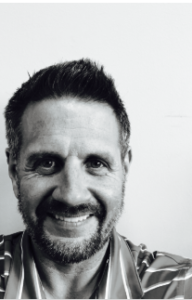Blog entry written on: Public awareness of the National Suicide Prevention Lifeline following the release of a hip-hop song, (bmjebm-2020-111509)
Authors: Trevor Torgerson, Cole Swayze, Sara Sanghera, Craig Cooper, Jason Beaman, Micah Hartwell, Matt Vassar
In April of 2017, the hip-hop artist, Logic (Sir Robert Bryson Hall II), released the hit song titled “1-800-273-8255”, the toll-free number for the National Suicide Prevention Lifeline (NSPL). At the beginning of the song the lyrics are sung from the perspective of someone calling the NSPL with thoughts of suicide and the song ends with lines sung from the caller’s perspective singing: “I don’t even wanna die anymore”, and “I finally wanna be alive”.
Over the coming months and years, this song would have a profound effect on listeners. For example, the NPSL reported their second-highest daily call volume in its history the day “1-800-273-8255” was released, while the highest call volume occurred after Logic performed “1-800-273-8255” at the 2017 Video Music Awards. In our study, “Public Awareness of the National Suicide Prevention Lifeline Following the Release of a Hip Hop Song” (bmjebm-2020-111509) we sought to measure increased public awareness of the NSPL through Google searches and Twitter activity. We used forecasting models and found Google searches for “Suicide Hotline” increased 49% the day after Logic’s song was released and increased by an average of 9% for the month following release. We also found an increase in Twitter mentions and activity surrounding the NSPL’s Twitter account. Regarding limitations, Google Trends and Twitter are only two means of measuring public interaction and other national events may have the potential to confound our results.
“1-800-273-8255” is another example of many studies displaying celebrities and the entertainment industry’s influence on public health. Kylie Minogue, Angelina Jolie and Jade Goody have all been associated with an influence on cancer screening and prevention measures. A Grey’s Anatomy episode was found to increase calls to the national sexual assault hotline, and Stranger Things (Netflix original show) was associated with increased funding for the rare genetic disease Cleidocranial dysplasia. There are however, examples where the entertainment industry produces a product that may be harmful to public health. The Netflix original show, 13 Reasons Why, was associated with an increase in youth suicide rates after the show aired.
What’s Next?
The growing popularity of social media platforms and their unprecedented influence on young people presents some unique opportunities to: 1) reduce the stigma associated with seeking help following trauma; and 2) ease anxiety that comes with reaching out for help. One way to ease the anxiety of reaching out for help is by displaying what getting help actually looks like. The less “unknowns” involved in the treatment process, the more receptive victims may be to seek help and adhere to treatment plans. A good example of this idea occurred in a 2019 Grey’s Anatomy episode in which a a victim of sexual assault was administered a rape kit. These depictions may reduce anxiety and be all it takes for a victim to reach out for help. Another practical step forward is incorporating the actual hotline numbers, or other associated resources, into different media platforms. No one is immune to trauma, but we can all come together to educate, reduce stigma and provide access to care for those in need.
Authors:
Trevor Torgerson BS,
Affiliations:
1. Office of Medical Student Research, Oklahoma State University Center for Health Sciences, Tulsa, Oklahoma.
Conflict of Interest: Nothing to declare
Corresponding Author: Mr. Trevor Torgerson, Oklahoma State University Center for Health Sciences, 1111 W 17th St., Tulsa, OK 74107, United States. Email: trevor.torgerson@okstate.edu Phone: (918)
582-1972
Role of Funding Source: NA.
Matt Vassar PhD
Affiliations:
1. Office of Medical Student Research, Oklahoma State University Center for Health Sciences, Tulsa, Oklahoma.
Conflict of Interest: Dr. Vassar reports receipt of funding from the National Institute on Drug Abuse, the National Institute on Alcohol Abuse and Alcoholism, the US Office of Research Integrity, Oklahoma Center for Advancement of Science and Technology, and internal grants from Oklahoma State University Center for Health Sciences — all outside of the present work.
DISCLAIMER
The views and opinions expressed on this site are solely those of the original authors. They do not necessarily represent the views of the BMJ and should not be used to replace medical advice. All information on this blog is for general information, is not peer-reviewed, requires checking with original sources and should not be used to make any decisions about healthcare. No responsibility for its accuracy and correctness is assumed by us, and we disclaim all liability and responsibility arising from any reliance placed on such commentary or content by any user or visitor to the Website, or by anyone who may be informed of any of its content. Any reliance you place on the material posted on this site is therefore strictly at your own risk.


